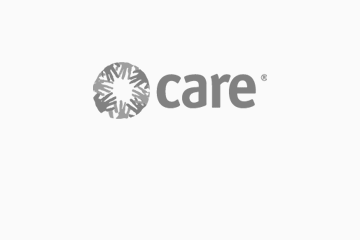Despite steady economic growth, challenges remain in the fight to overcome poverty. Donate now.
Despite steady economic growth, challenges remain in the fight to overcome poverty. Donate now.
Following nearly three decades of turbulent internal conflict, Sri Lanka has begun making great strides in its development.
At high risk of natural disasters such as floods, tsunamis, and landslides, CARE has been working in the country since 1950, to strengthen the resilience of local communities to better deal with disasters and the impacts of climate change.
We’ve continued to work with affected communities in recent years to reconstruct homes and livelihoods and promote economic and social development. We’re also providing support for returned refugees from Australia and India, helping foster new opportunities through job training and strong community networks.
Fast Facts
Population: 22.40 million (July 2017 est.)
Life expectancy: 76.9 years (73.5 years male, 80.6 years female) (2017 est.)
Infant mortality: 8.4 deaths/1,000 live births (2017 est.)
Under-5 mortality*: 9.4 deaths/1,000 live births (2016 est.)
Maternal mortality: 30 deaths/100,000 live births (2015 est.)
Adult literacy rate: 92.6% (93.6% male, 91.7% female) (2015 est.)
Access to improved drinking water: 95.6% (98.5% urban, 95% rural)
Access to improved sanitation: 95.1% (88.1% urban, 96.7% rural)
Labour force participation rate^: 74.1% male, 35% female (2017 est.)
Percentage of seats held by women in national parliament^: 5.8%
GDP per capita: $13,000 (2017 est.)
Source: CIA World Factbook, *UNICEF, ^World Bank
The Boxing Day tsunami
Sri Lanka suffered the second-highest number of deaths after Indonesia in the 2004 Boxing Day tsunami, and the highest death and displacement rate as a proportion of its population and size. The worst damage was on Sri Lanka’s east and south-east coast, which faced the earthquake’s Indian Ocean epicentre, however, there was significant damage and loss of life on Sri Lanka’s western coast as well.
35,322 people died or disappeared and 516,150 were forced from their homes in Sri Lanka, as a result of the disaster. Damage was estimated at USD $1.5 billion. The tsunami pushed sea water deep inland demolishing buildings, destroying crops in ground and salting fertile farmland.
CARE helped over 110,000 families affected by the tsunami. Immediately after the disaster, CARE staff helped search for survivors, distributing safe drinking water, food, clothing, bedding and hygiene kits. After the initial response, CARE helped communities rebuild public buildings, water wells and toilets, and provided counselling to traumatised people. We also helped people earn money by providing them with training and supplies needed to start a small business, such as fishing and farming.


The Sri Lankan tea industry
Arguably Sri Lanka’s most important industry, the tea sector accounts for 19 per cent of the nation’s foreign earnings and provides direct employment to over 310,000 people, the majority of them women. It is also strongly linked with the national identity; handpicked Ceylon tea is renowned for its high quality.
Increasingly, however, the industry is at risk. Both international and internal challenges face the tea sector. Globally, exports compete with cheaper products from Kenya, India and other producers, where mechanised production is more common and production costs are lower. Read more about the tea industry in Sri Lanka and how we’re empowering workers in the tea sector.
Donate now
Support our ongoing work to create a more equal world.
Your donation can help end extreme poverty and give people the means to build a better future for themselves in countries like Sri Lanka.
For those living in extreme poverty, your support brings education and training, healthcare and clean water, nutritious food, and new ways to earn an income. And in times of crisis, you help us deliver emergency relief. Please donate now.
Read more about our ongoing impact in Sri Lanka:
– More CARE evaluation reports from Sri Lanka and other countries are available at CARE’s Electronic Evaluation Library.
OTHER RESOURCES AND HIGHLIGHTS
-
 Download
DownloadA Different Cup of Tea 459 kB
The business case for empowering workers in the Sri Lankan tea sector
-
 Download
DownloadLearning from Crisis 3 MB
Strengthening CARE's humanitarian response since the 2004 Indian Ocean tsunami
-
 Download
DownloadAsia Impact Report 5025KB
A review of CARE's work in Asia over five years from 2005-2010
-
 Download
DownloadBroadening Gender: Why Masculinities Matter 3MB
Attitudes, practices and gender-based violence in four districts in Sri Lanka

